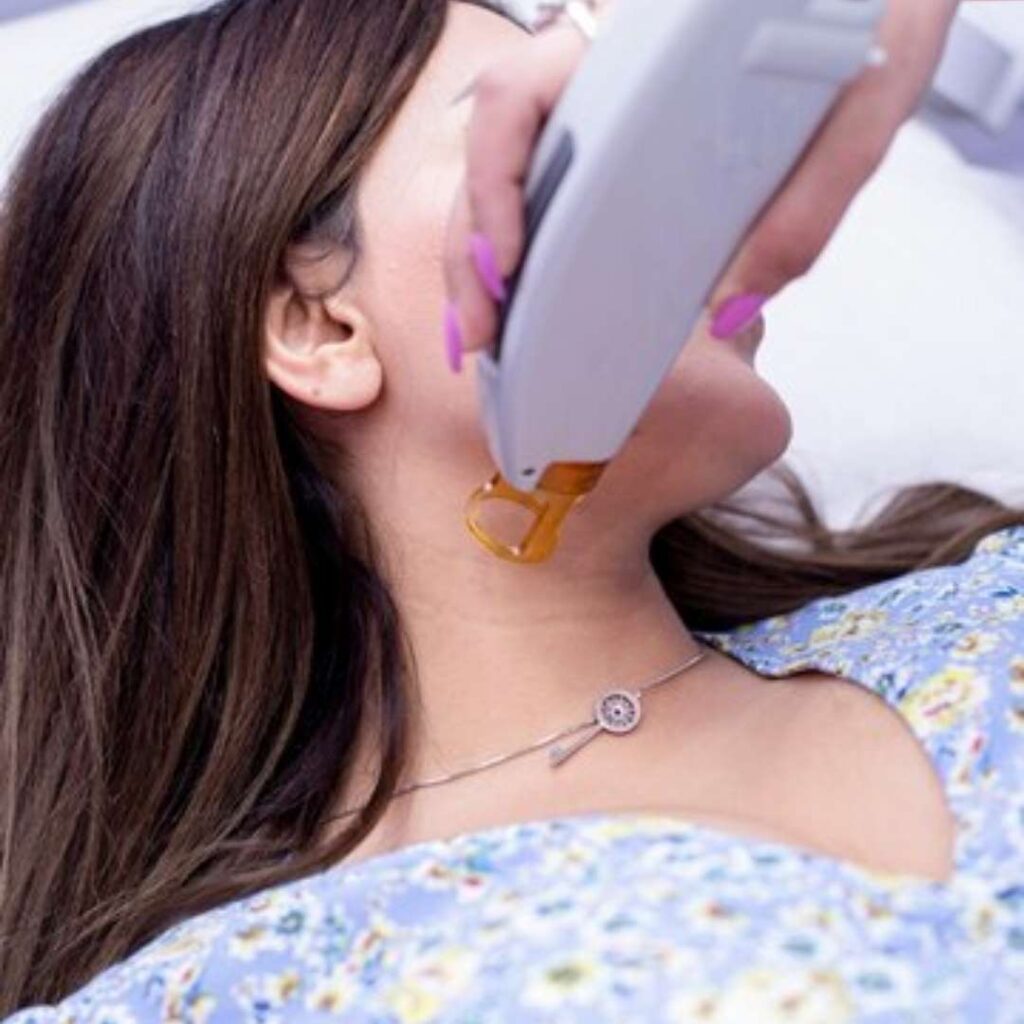
CO2 fractional Laser
CO2 fractional laser treatment is an updated method of skin resurfacing with the help of the carbon dioxide laser beams. Laser is an advanced resurfacing technology that uses a microscopically small laser beam to remove or modify damaged skin tissue layers. The technique is to direct only the laser on the column tissue, which is a fraction of a tissue, so that the remaining tissue is intact. The technique was evolved to reduce the healing time and downtime with minimal pain from the ordinary laser treatments.
How Does it Work?
A special wavelength of light, CO2 laser, is emitted to contain the absorption of the water in the skin. The laser vaporizes the water, thus taking away skin layers and then it causes the production of collagen and elastin in the skin. Specifically, the fractional nature of the laser means that only a small area is treated at once, which stimulates the recovery by leaving the surrounding tissue intact.

Benefits of Fractional Laser
1. Skin Rejuvenation
CO2 laser treatment will enhance skin texture and color enormously. When done through the skin the deficit in the larger pore space is repaired. Thus, the skin will have a smooth and younger appearance.
2. Reduction of Acne Scars
For those of us who have been struggling with acne, fractional laser treatment of can be successful. The procedure gets rid of cellulose by the proliferation of the new, healthy skin.
3. Pigmentation Correction
One of the greatest advantages of this procedure is that it is a convincing method of treating epidermis spot issues such as a melasma, age spot and sunspot. This helps the skin to be pigment-free and remove the dark pigmentation of the skin.
4. Improved Skin Elasticity
Stimulation of the formation of collagen and elastin, which are the skin’s building block, is what the fractional CO2 laser treatment does to the skin. As per WHO report, fractional CO2 laser can improve skin elasticity.
5. Minimal Downtime
The fractional CO2 is gives more time for skin to recover than the other surgeries. The doctor will perform a Fractional CO2 Laser Resurfacing for you, the duration of the session depends on the CO2 laser device used and the technology employed.
6. Pre-Prepration
During the course of weeks prior to the attendance of the procedure, the patients are made to follow the specific instructions of the doctors. These might be ranging from the avoidance of sun exposure, the discontinuation of the certain drug, and the taking of antiviral medication particularly if you are prone to developing cold sores are included in the list of precautions you might need to take prior to treatment.
8. The Treatment Session
Before starting the treatment, you will be given a detailed skin cleansing to remove any impurities from the skin’s surface. In order to reduce the potential for pain, a topical anaesthetic may be the very first medication the doctor will decide to use. They will then turn on the device and starting with the smallest areas going to the biggest ones and place the beam through the device to reach its target. The procedure usually takes from half an hour to two hours on the skin surface, depending on the size of the treated area.
9. Aftercare
Within three to five days, the calamity of the skin is expected to be sealed off with the skin beginning to peel. This is the reason why the skin peels, and it is a way of the tissues that are treated buy re-releasing new and healthy skin. To avoid any scaring it would be best to just let it heal whole and not try to peel it or scratch it.
10. Skin Peeling
The recovery process can include initial symptoms like peeling skin, a mild rash, and dry redness the first days within the treatment day. The situation can be mitigated with a compress, and by proper skin care maintenance, such as the reload of moisture.
11. Sun Protection
Your skin should be kept safe from the sun after CO2 fractional laser therapy. Choose your sunscreen which saves you the rays with two different ultraviolet sunblocks. Eat a balanced diet, drink lots of water, and break sugary & salty foods as much as possible. Moreover, apply sunscreen generously to all exposed skin surfaces, and don a hat, UV-protective clothing, and sunglasses.
